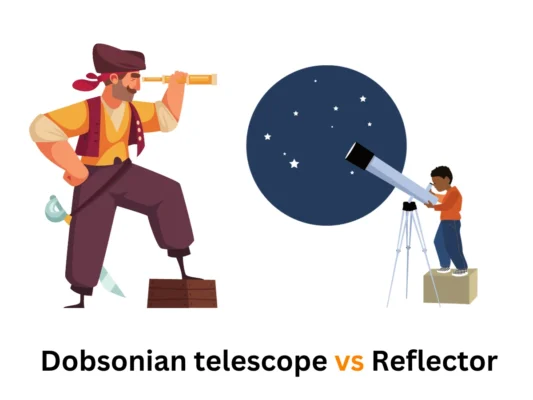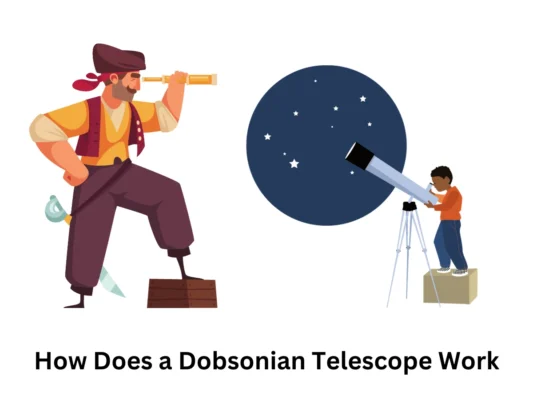The main difference between Dobsonian telescope and Reflector is that Dobsonians use mirrors to focus light, while reflectors use lenses. This means that Dobsonian telescopes are generally bigger and heavier than their more compact cousins, but also offer higher magnifications. Reflectors usually have wider fields of view, which makes them ideal for viewing large expanses of sky or deep space objects with plenty of detail.
Dobsonian telescope
The Dobsonian was introduced in the 60s by amateur astronomer John Dobson. He often said that he didn’t ‘invent” much with his invention, yet it helped introduce astronomy to more amateurs and has an important place amongst other telescopes today like Gemini or Newtonian reflectors which are also popular for their affordability compared to newer designs like Schmidt cameras.
The Dobsonian telescope is the most popular type in use today because it’s generally cheaper, easier to use and can be had by anyone. What makes this even better are some nifty features that make using your favorite scope more cost effective.
Also read helpful article on what is a dobsonian telescope
Altazimuth mount
The Dobsonian telescope is the trademark of all Altazimuth mounts. This type of mount can be better for amateurs as it uses one pointed Celestron altazmount vs two legs like those that an equatorial model would have, making them easier to use than other designs and allowing you more stability when looking through your scope at night skies
It’s also worth noting how different these types really are: while most reflector-based observing tools require German Equatorial Mounts (GEM), or some other formative device.

Tubes
To save money, Dobson decided to use cheaper tubes instead of the expensive fiberglass ones. The same type used for holding cement is strong enough and will not break when lifting your telescope up off floorings so you don’t need special equipment like cranes or scaffolding.
Mirrors
The thinner, cheaper mirrors that Andrew Dobson introduced are what made his telescopes more popular than those with thick Pyrex glass.
The Dobsonian telescope is a classic optical reflector that can be moved up and down left or right to change the magnification. The name comes from its originator, John Dobson (who also developed his own design for an altazimuth mount). Unlike other telescopes which have been invented many times over since their inception in 1608 -such as Cassegrainian designs-, this type follows allure of reflecting systems used during amateur astronomy before then: As seen through refracting lenses/spots etc.
Reflectors Telescope
Reflectors are a type of reflecting Telescope due to their ability work optimally. They use mirrors, which make them different from refractors that uses lenses- though this difference makes reflector more expensive and less popular amongst amateur astronomers who want the hobby without paying too much money for it or being unsure on what they’re doing themselves as is often seen in those just starting out with astronomy pursuits.
In some cases where people have certain needs but budget restrictions don’t allow them full flexibility when finding instruments, secondary markets open up so called “reflection” telescopes designed specifically around these desires
The reflecting telescope is a cheaper, easier to use alternative to the more expensive and complicated refracting models. They were invented by Issac Newton who called his invention “Newtonian.”
The Reflecting Telescope is a device that lets you look through the heavens and see what’s out there. It works by collecting light from an object on its large mirror, then reflecting it onto smaller secondary mirrors which project images of celestial bodies for your eyes only – they’re not visible with naked eye anymore.
Also read helpful article on Reflector
Dobsonian telescope vs Reflector Which is Better?
Dobsonian telescope vs reflector telescopes both have their pros and cons. The size of the mirror in a Dobsonian telescope is bigger than that of a reflector, which allows it to collect more light from distant objects. However, this also makes Dobsonian telescopes heavier so they are not as easy to move around. Reflectors are sleeker with smaller mirrors so they are easier to transport but less powerful for viewing far away objects.
The most important thing when picking out your new telescope is what you want it for! If you will be mainly looking at things close up then go with a Dobsonians but if you plan on viewing stars or galaxies then go for the reflectors.
You can check reviews of telescopes here
Conclusion
I hope this guide has been able to clarify and outline the major differences between a Dobsonian telescope vs Reflector , which you can get for beginners.
Dobsonian telescope vs Reflector are two different types of telescope. A reflector uses a parabolic mirror to collect light, whereas a Dobsonian uses an open tube with one or more curved mirrors at the back end. The price for these telescopes is similar but there is no standard pricing system so it’s hard to compare them apples-to-apples.
In general though, you’ll find that reflector telescopes tend to be cheaper than those made from other materials like glass lenses because they use less material overall. If cost isn’t your main concern then you can consider how each type might fit into your specific needs as well as their pros and cons before making a decision which one will work best for you according to your need. As mentioned before these are made by many types of mounts with mirrors or reflectors depending on what you want in your viewing experience; they also come at different prices so there’s something out there perfect for everyone.






